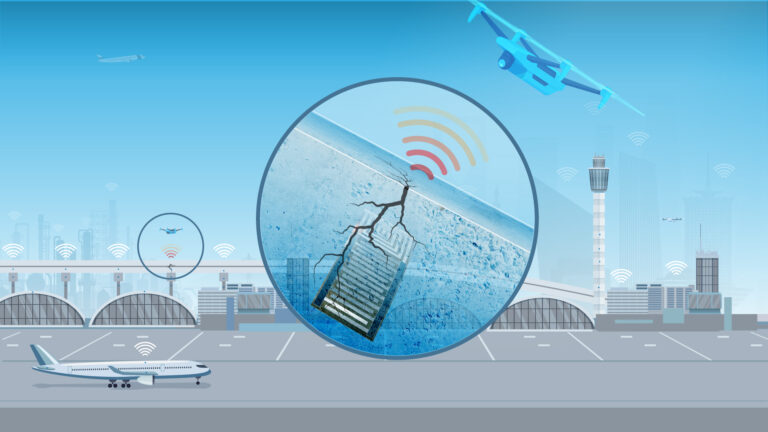Mechanical Engineering
Machine learning model identifies gas molecules
Automated system could be used to spot toxic emissions, air pollutants or diagnostic biomarkers.

A computer model that can reliably identify gases under a wide range of conditions could be used in automated systems that detect volatile organic compounds[1]. It has potential in sectors such as environmental monitoring, healthcare, and energy, where precise gas detection is essential for safety and efficiency.
“This work has significant implications for security and decision-making, essentially creating a sensor that confidently reports its predictions,” says KAUST’s Aamir Farooq, who led the work.
The model interprets data gathered by a technique called spectroscopy, which measures how gas molecules absorb particular wavelengths of light or microwaves, for example. This spectrum serves as a unique fingerprint for each gas. However, it is often challenging to detect the presence of one gas within a complex mixture, because features of different gas spectra can overlap and obscure one another.
That is where machine learning models can help. Machine learning involves feeding information to a computer algorithm so that it gradually ‘learns’ to recognize patterns and connections in the data. Once this training is complete, the model can then interpret entirely new data.
Researchers have previously trained machine learning models to identify the spectroscopic fingerprints of molecules, but these often failed to cope with real-world challenges such as noise, interference, and variations in pressure and temperature. “Previous models often required extensive datasets, and struggled to adapt to new conditions,” says Mohamed Sy, a PhD candidate in Farooq’s group who worked on the new model.
The KAUST team used several tactics to create a better machine learning model called VOC-certifire, which can identify gas molecules from their terahertz-frequency spectra. Although this model was trained on relatively limited amounts of data, it achieved the same level of accuracy as more data-intensive models.
The researchers started with simulated spectra of 12 volatile organic compounds, including ethanol and the toxic gas hydrogen sulfide, and used a strategy called augmentation to generate many variants of these spectra. This process simulated how the spectra would change at different temperatures and pressures, for example, and also introduced additional noise to mimic real-world readings.
The augmentation process produced a set of 12,000 spectra to train the model. “By training the model with these variations, it becomes more resilient, enabling it to generalize effectively with less data,” says Farooq.
When the team tested the model’s ability to identify spectra, they used another technique called randomized smoothing to further improve accuracy. This involved tweaking the spectrum multiple times, and asking the model to identify each variant. The gas molecule recognized in the majority of these tests is then more likely to be the correct answer — and the model can also report how confident it is in its assertion.
The team found that VOC-certifire was better than three rival models, and could even “offer a standardized level of accuracy that human experts may not consistently achieve”, says Sy. The researchers have continued to develop the model, and will report their latest work at the prestigious Neural Information Processing Systems conference in December 2024.
Reference
- Sy, M., Al Ibrahim, E. & Farooq, A. VOC-Certifire: Certifiably robust one-shot spectroscopic classification via randomized smoothing. ACS Omega 9, 39033−39042 (2024).| article
You might also like

Mechanical Engineering
Innovative strain sensor design enables extreme sensitivity

Mechanical Engineering
Turbulent flow shows surprise patterns that could help boost efficiency

Mechanical Engineering
Making a splash: unraveling the impact of large water droplets

Mechanical Engineering
Sour gas has sweet potential for hydrogen production

Mechanical Engineering
Dancing droplets’ new spin on water harvesting

Mechanical Engineering
Underwater air pockets smooth out the bumps

Chemistry
Squeezing more from carbon dioxide

Applied Mathematics and Computational Sciences




